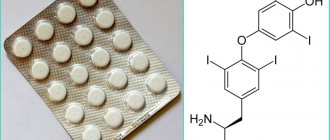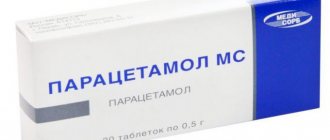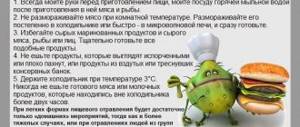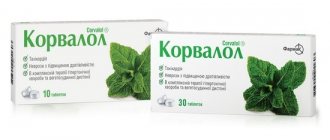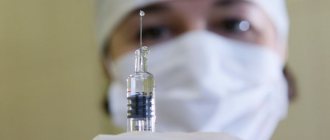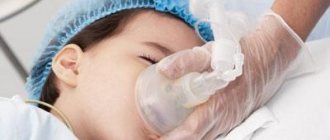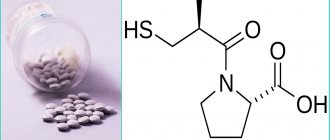Nasal sprays
Miramistin has a wide range of applications and has proven its effectiveness in the complex treatment of ENT diseases, gynecology, surgery, venereology, urology, and dentistry.
Studies have ruled out the danger that an overdose of Miramistin may pose in children and adults. But in specific cases, people’s body reactions are individual. Therefore, you need to be prepared for anything and know what measures to take in a situation where the use of the drug causes negative consequences.
Characteristics of the drug
The medicine contains the following components:
- The active substance is miramistin.
- Distilled water.
Depending on the release form, other ingredients are added. The following medications are available for sale:
- Spray intended for irrigation of the nasal passages and pharynx.
- An ointment used to treat mucous membranes and skin.
Miramistin is used to treat bacterial infections. But it does not penetrate deeply into muscle tissue, has a superficial effect, and therefore is not absorbed into the blood and is not distributed throughout the body. This is what makes it impossible to overdose.
It does not have a specific taste or characteristic odor. Due to safety, it is recommended for the treatment of children over 3 years of age and pregnant women.
Miramistin is often used in complex therapy, as the medicine enhances the effectiveness of antibiotics and antifungals.
Indications
Prescribed for the following problems:
- For irrigating the throat with stomatitis, candidiasis of the oral mucosa, viral or bacterial colds.
- For treatment of the urethra, external genitalia, douching in case of vaginosis, thrush or inflammatory process. Allowed in the presence of sexually transmitted diseases in men and women.
It is not recommended to use Miramistin as an independent remedy - the effectiveness of the drug is not enough to completely destroy pathogens.
Contraindications
Despite the safety of the antiseptic and the absence of risks of overdose, there is a ban on use - an allergic reaction to the active component or additional ones. It does not pose a threat to life, but leads to severe discomfort.
All that is necessary in this case is to stop taking it. Immediately after discontinuation of Miramistin, the unpleasant symptoms disappear.
Miramistin overdose in children and adults – Website about poisoning
Miramistin overdose
Miramistin is a pharmacological drug belonging to the group of cationic surfactant antiseptics. It is used externally and locally.
Selective antiseptic
Miramistin, like many other antiseptics, has antimicrobial, disinfectant, anti-inflammatory, bactericidal and local immunoadjuvant effects.
However, the drug has virtually no effect on human cell membranes, having a very high selective effect.
Pharmacological properties
Miramistin is an antiseptic with anti-inflammatory effect
The selectivity of the drug is due to the different structure of human cell membranes. They are formed by a fairly long lipid radical chain, which sharply limits the likelihood of hydrophobic bonding of the drug components with cells.
Chemical composition
The therapeutic effect of the drug is due to its components.
The main active ingredient of the drug is benzyldemithyl ammonium chloride monohydrate. Its effect is due to hydrophobic interaction with membrane lipids, leading to their fragmentation and complete destruction.
Moreover, part of the molecule of the substance, penetrating into the hydrophobic region of the membrane, destroys the supra-membrane surface layer, crushing and loosening the membrane itself.
Which leads to an increase in the degree of its permeability in relation to high-molecular elements, a change in the enzymatic activation of the microbial cell, and inhibition of enzymatic mechanisms and systems.
The end result is inhibition of the vital activity of microorganisms, their complete cytolysis (dissolution).
In other words, the drug actively fights such types of diseases, fungi, bacteria, as well as microbial associations such as:
- gram-positive as well as gram-negative;
- aerobic as well as anaerobic;
- spore-forming and asporogenic (in the form of monocultures);
- hospital strains;
- gonococci, trichomonas, herpes, chlamydia, etc. (sexually transmitted);
- yeast-like;
- axomycetes;
- dermatophytes.
The action of miramistin potentiates the effect of antibiotics.
Pharmacokinetics
As stated above, the drug is used both externally and locally. They can be used to douche the external genitalia, female and male, organs.
At the same time, during topical application, the substance is not absorbed through the skin and mucous membranes.
Purpose
Used to disinfect mucous membranes and skin
The drug is prescribed both as an independent remedy and as part of a complex treatment. It can be used in the treatment of diseases in both children and adults. They disinfect mucous membranes and skin. The main purpose of the product is an antiseptic effect and potentiation of local immunity. The medication is effective in the following cases:
- surgery: infected wounds of various locations and etiologies, secondary infections of granulating injuries;
- combustiology: burn wounds of level II and II, dermatoplasty;
- gynecology: wound suppuration, perineal damage and vaginal inflammation, vulvovaginitis;
- dermatology: candidiasis of skin surfaces and mucous membranes, mycosis of inguinal folds and feet;
- venereology: gonorrhea, herpes (genital), chlamydia, syphilis, etc.;
- otolaryngology: otitis, sinusitis, tonsillitis in acute or chronic form;
- dentistry: periodontitis, stomatitis, etc., as well as processing of dentures.
Contraindications and side effects
Initially, this medicine was intended for treating the skin surface, equipment and instruments of astronauts. Because in a confined space, viruses and microbes are likely to multiply quickly. It was to protect astronauts from the pathogenic effects of pathogens that a very effective antiseptic was developed.
Among the cases that limit or exclude the use of the drug, the instructions indicate one point: individual increased intolerance to the components.
Side effects may include a burning sensation
Similar to contraindications, probable side effects are also noted in one point: a slight burning sensation that goes away on its own after 10-20 seconds. This situation does not require stopping the use of the medication.
Allergic manifestations are likely to be very rare, because the drug does not contain dyes or flavored components.
Without having a pronounced taste or aroma, the medication does not cause nausea or gag reflexes.
Possibility of toxemia
The drug is easy to use, especially for small children who cannot spit out liquid when rinsing their mouth.
However, with prolonged use, not only pathogens die, but also beneficial bacteria that line the mucous membranes.
Recommended doses
Long-term use kills not only pathogens, but also beneficial bacteria.
Dosages are established by the attending physician, in each individual case. The instructions do not contain information regarding whether the substance can be swallowed. But the product is not intended for internal use. Therefore, it is advisable to avoid such situations.
Although some of the liquid is swallowed when rinsing, its dose is minimal and does not pose any danger even to a child.
Unless otherwise prescribed, the instructions should be followed.
Application in burn medicine and surgery
Miramistin is used in burn medicine for 3-5 days
For the purposes of prevention during irrigation, as well as loose irrigation and packing of wounds, injuries, burns and fistula tracts, fixing cotton swabs soaked in the product, therapeutic measures are carried out 2-3 times a day for 3-5 days.
To drain skin lesions, the daily dose of medication is 1 liter.
Use in gynecology
When irrigating the vagina during the prenatal period, treatment lasts 5-7 days. During childbirth - every time after a vaginal examination. In the period after childbirth - 50 ml of solution in the form of a tampon (cotton or gauze) with exposure for a period of about 2 hours, daily for 5 days.
In the case of a cesarean section, the vaginal tract is treated before the surgical intervention, and the uterine cavity is treated during the operation itself. Then a tampon is inserted for a 2-hour period, every day for a week.
Therapy of inflammatory processes and diseases is carried out over a course of 2 weeks, by inserting tampons or electrophoresis.
Preventive measures for sexually transmitted diseases are advisable no more than 2 hours after sexual intercourse. To do this, the composition of the bottle is injected into the urinary tract (using a urological applicator) for 3 minutes: for men in the amount of 2.5-3 ml, for women, respectively, 1-2 ml, and also into the vagina in the amount of 5-10 ml.
When treating urethritis, as well as urethroprostatitis, 3 ml is injected twice a day. The therapeutic course corresponds to 10 days.
Use in otolaryngology
For rinsing you need 10 -15 ml of the drug
When treating purulent sinusitis, tonsillitis, pharyngitis, and laryngitis, rinse or inject with three to four times pressure three to four times a day. For rinsing, the required amount of medication is 10-15 ml.
Use in dentistry
When treating stomatitis, gingivitis and other inflammatory phenomena in the oral cavity and the inside of the cheeks, rinsing is recommended. For these purposes, it is necessary to use 10-15 ml of solution 3-4 times a day.
special instructions
The ability to concentrate a substance in the area of a pathological process reduces the likelihood of side effects, and duplicated procedures ensure both deposition of the substance and prolongation of the drug effect. In addition, it is worth listing special instructions regarding taking this drug:
- when treating sexually transmitted diseases, it is not recommended to urinate after the event for 2 hours;
- in the absence of resorption of the drug, its use during pregnancy and lactation is permitted;
- if there is no effect on concentration and speed of psychomotor reactions, drivers are allowed to use the medication;
- combination with antibiotics reduces the resistance of pathogens to the latter.
Signs of toxemia
In case of overdose, mild nausea goes away quickly
The drug is completely official; before being released into production, it underwent many necessary tests and studies. If Miramistin was taken, an overdose has not been recorded in the history of medicine. In working concentration the medicine is not toxic.
However, with uncontrolled use, mild poisoning with miramistin is possible. Especially when treating the oral or nasal cavity, when liquid may enter the body.
The instructions provide for cases where a large amount of medication enters the body. But even in such a situation it is impossible to get poisoned. The only negative manifestation in this case will be mild nausea, no more, the symptoms of which disappear on their own after a very short period of time.
The process of elimination (removal) from the body occurs gradually and naturally.
Share with your friends:
Your mark:
Source:
Is it possible to be poisoned by Miramistin? What happens if you take Miramistin?
Miramistin is an antiseptic that has gained enormous popularity among consumers. Thanks to this drug, many mothers began to feel more confident and not be afraid for their baby, because now in case of unpleasant colds or, for example, with an oral disease, Miramistin will come to the rescue. What composition does miramistin have and whether the composition of chlorhexidine differs from miramistin, we will consider further.
Composition of miramistin and chlorhexidine
Instructions for use indicate that Miramistin has the following composition:
- Miramistin or benzyldimethyl
The drug has no taste; when shaken, a fairly dense foam forms.
Chlorhexidine has the following composition:
When shaking, foam forms, but it is less noticeable and not stable. The drug has a taste and it is bitter, therefore not pleasant. Once on the oral mucosa, there is slight discomfort, a feeling of barely noticeable freezing, and a slight burning sensation.
As you can see, the drugs differ both in appearance and composition. Although chlorhexidine is considered to be a drug, it is not actually one. Although both drugs fight infections and bacteria, miramistin has more healing properties than chlorhexidine and is safe for health.
Miramistin overdose
In general, before releasing the drug for sale, it was studied and experiments were carried out, which showed that an overdose of the drug was excluded.
The instructions tell you how to use it and if you follow it, you will not be able to harm your body. Of course, you shouldn’t douche or irrigate your throat and nose too much; any drug can lead to an overdose in large quantities.
If you pay attention to the indications for use, you will notice that when gargling or instilling in the nose, the composition must be spat out. Thus, you can understand that the Miramistin composition is not worth swallowing, and it is not necessary. If swallowed in large quantities, intoxication may begin and a slight feeling of nausea will appear.
Although the instructions contain an explanation that miramistin is not absorbed into the mucous membrane and does not cause harm to the body, if swallowed, a reaction will occur in the stomach that will lead to such unpleasant symptoms as a feeling of nausea, but will pass quickly. Miramistin will be eliminated from the body gradually naturally and, apart from discomfort, will not cause any damage to the body.
Application of miramistin
Miramsitin is used for douching of the internal and external genital organs in women. Men also use it by douching into the urethra for various sexually transmitted diseases. In general, the drug is irreplaceable.
Many people use chlorhexidine and notice that the therapeutic effect is the same, only sometimes you can feel the dryness of the mucous membrane of the internal genital organs in women. The composition is rougher and can lead to dryness, but there is no need to worry, the body’s functioning begins to improve quickly as soon as the drug is stopped.
Contraindications for Miramistin
In fact, Miramistin is accepted by everyone without consequences. But if a person is prone to allergic reactions, then perhaps he should not use the drug. But miramistin does not enter the bloodstream, so how can it cause allergies? The allergy in this case does not manifest itself in a rash, but in redness of the mucous membrane; it is simply not susceptible to the component of the drug and that’s all.
If after taking the drug it is noticed that the mucous membrane is red and inflamed, you need to stop taking it, and it will quickly return to normal. There will be no severe allergic manifestations, other than redness, and there is no need to fear that anaphylactic shock will begin either.
Release form
Miramistin is produced in a polyethylene bottle with a nozzle for spraying, as well as a nozzle for douching the genitals. Various containers 50 ml. with a nozzle for douching. 200 ml. with spray nozzle.
The manufacturer also offers Miramstin in the form of an ointment, which also has an antibacterial effect and, in tandem with the solution, fights infection twice as fast. Miramstin ointment is often used for thrush and other unpleasant diseases.
Side effects
Every drug has some side effects and Miramistin is no exception. There may be a slight burning sensation if the drug gets on the mucous membrane, the only thing is that it is hardly noticeable. There are cases that the drug causes a strong burning sensation, but this is only when the mucous membrane is actually infected with bacteria and the burning sensation proves that Miramistin fights bacteria effectively.
Source: https://bdc03.ru/polza-i-vred-produktov/peredozirovka-miramistinom-u-detej-i-vzroslyh.html
Causes of poisoning
Factors of possible overdose, as well as intoxication, include the following:
- Ingestion of the drug. Spray irrigation does not cause problems if done correctly. Getting into the stomach provokes symptoms of poisoning. But the signs are so insignificant that an adult sometimes does not pay attention to them.
- A child can become poisoned if the solution is left in a place accessible to him. But even in this case, an overdose does not threaten death, since the medicine is not absorbed by the mucous membranes of the gastrointestinal tract.
Excessive amounts of the drug leave the body in feces and urine.
Compound
"Miramistin" is available in the form of a colorless solution, which tends to foam when shaken. In addition to the bottle, the package also contains:
- urological applicator;
- screw cap;
- spray nozzle;
- cover with first opening control.
The main active trace element is benzyldimethyl myristoylamino propylammonium chloride monohydrate in a dosage of 100 milligrams. In addition to the solution, Miramistin is also produced in the form of an ointment and spray.
Clinical picture of overdose
There are several signs characteristic of Miramistin poisoning:
- When applied externally, the mucous membranes may feel dry.
- When the nasopharynx is irrigated and the substance enters the stomach, slight nausea develops.
- If you are allergic to the components, redness at the site of application, itching, and slight swelling may occur.
As soon as Miramistin is stopped, the condition of the epithelial layer returns to normal.
Lethal dose
Since poisoning is practically excluded, there is no data on the amount of active substance that can be fatal. But it is necessary to take into account that Miramistin is a drug and should not be used independently. It is worth remembering that the risks increase if used to treat a newborn or one-year-old child.
Indications for use of Miramistin
Surgery, traumatology:
- local treatment of infected wounds of different locations and etiologies;
- prevention of secondary infection of granulating wounds.
Combustiology:
- treatment of burns of II and III A degrees;
- preparation of burn wounds for dermatoplasty.
Obstetrics and gynecology:
- prevention and treatment of suppuration of postpartum injuries, wounds of the perineum and vagina, postpartum infections;
- inflammatory diseases of the external genital organs and vagina (vulvovaginitis).
Dermatology: complex treatment of candidiasis of the skin and mucous membranes, mycoses of the feet and large folds.
Urology, venereology:
- complex treatment of acute and chronic urethritis and urethraprostatitis of specific (chlamydia, trichomoniasis, gonorrhea) and nonspecific nature;
- individual prevention of diseases that are sexually transmitted (syphilis, ,).
Otorhinolaryngology: complex treatment of acute and chronic otitis, tonsillitis, laryngitis.
Dentistry:
- treatment of periodontitis, stomatitis;
- hygienic treatment of removable dentures;
- prevention of microbial complications after surgical interventions on the oral mucosa.
First aid
Suspected overdose does not require specific procedures. Of course, if the baby has drunk a lot of the drug, gastric lavage is necessary. But Miramistin’s bottle is equipped with a dispenser, so even a curious child will not be able to swallow a significant amount of liquid.
When ointment poisoning is suspected, you need to call a doctor. Up to 3 years of age, cleansing the gastrointestinal tract at home is not recommended, as there is a high risk of damage to the thin mucous membrane of organs. And older children are unlikely to put everything in their mouth into their mouths.
An allergic reaction poses some danger. But the only symptoms of manifestation are characteristic itching and redness. Neither anaphylactic shock nor angioedema develop. To get rid of the clinical picture, it is enough to replace the drug using the doctor’s advice.
Antidote
There is no specific antidote to Miramistin.
Side effects
Miramistin can cause a number of negative effects in children under one year of age. Possible:
- Hyperemia (overflow of blood vessels of the circulatory system of any organ or area of the body).
- Rashes.
- Itching.
- Urticaria.
- Burning.
According to reviews, the side effects of Miramistin in children manifest themselves in the form of urticaria and itching.
There is no information about drug overdose. In women, there are no side effects from Miramistin in gynecology. But what to do if you notice deterioration? It is necessary to stop taking Miramistin solution if side effects occur. Reviews from patients confirm this.
Possible consequences
No severe complications were recorded. The patient sometimes experiences minor symptoms of burning and itching. With severe bacterial infection of the mucous membranes, the sensations are pronounced, but quickly disappear. In this case, there is no need to wash off the drug, since the signs indicate that the component is actively fighting the disease provocateurs.
Reviews
You can often see positive reviews about Miramistin on the Internet. Patients note that the product is truly truly effective. Women write about its use in gynecology; thanks to the drug, they quickly got rid of infectious diseases of the intimate organs.
In pediatrics, reviews of Miramistin indicate that the product helps speed up wound healing and is effective for sore throat and other diseases. There is practically no information about side effects. In rare cases, they talk about the occurrence of a short-lived burning sensation.
Given the fact that the drug is a universal antiseptic, it is often used to treat the throat. Literally after a few days the condition improves significantly. A good effect is also observed after spraying the product into the throat of a child, including an infant.
“Miramistin” is an antibiotic or not, we figured it out.
Diagnostic methods
Specific methods for diagnosing allergies include:
- skin tests;
- blood and urine tests;
- provocative tests;
- determination of immunoglobulins E;
- elimination test.
For differential diagnosis, the following is prescribed:
- inspection and listening;
- hardware research.
Once the preliminary diagnosis is confirmed, the doctor develops a treatment strategy.
